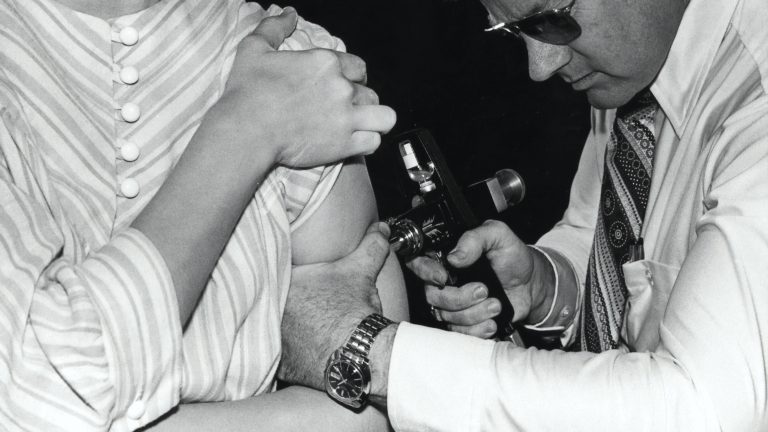by: Ankita Chatterjee
“Gesundheit!”
What’s in a sneeze? If you’re in a cramped college campus during flu season, the answer could be thousands of tiny droplets full of active viral particles. Potentially deadly diseases like influenza can spread quickly across a college campus, where large numbers of people packed into small environments can increase the probability and speed of disease transmission. In an effort to model the spread of influenza on college campuses, researchers at the University of Michigan employed the help of the aptly named Gesundheit-II bioaerosol sampler apparatus. Ideally, their work will help to shed light on the spread of influenza, and create a more accurate model for combating the impact of flu season on college campuses and other diverse and active populations.
The most recent flu season was known to be the worst since 2009. According to the CDC, vaccinations were only 25% effective against the most dangerous strain of flu, increasing concerns about preventing and controlling infectious disease spread. The influenza virus is thought to spread mainly in three ways: touching, coughing, and sneezing. Studies have also shown that simply inhaling air near someone who is infected could be enough to contract the disease. Current models of disease spread, however, fall short of describing crowded, busy, and diverse populations. To learn more about influenza, its spread, and methods of transmission in large populations, researchers decided to study a college environment. Diseases are very likely to spread quickly through colleges because of the nature of dorm buildings and classrooms; most college campuses have a wide variety of people. As a result, they are able to serve as models for places such as cities and office buildings, where similarly diverse groups are active, and potential transmission rates of diseases are very high.
To create this model, researchers developed an apparatus called Gesundheit-II, which analyzes the amount of viral RNA in a patient’s breath. The apparatus is able to collect particles as small as 1.0 μm. Over the course of the study, 178 research participants sat in front of the apparatus for 30 minutes, and were told to cough, breathe normally, and recite the alphabet three times during this period. The results of the study showed that cough frequency is associated with increased viral shedding. Additionally, flu development in the upper airway and lower airway appeared to be independent of each other. This could be significant in the future, as the independent development of the virus may increase the amount of time a person is infected, therefore increasing the overall probability of transmission from that person. All the data collected from the apparatus will go towards developing a more accurate, constantly evolving mathematical model for the spread of flu on college campuses.
Starting at the college campus level is a good beginning to a better understanding and development of a model for the flu. This is especially important as more new and difficult to control strains evolve. According to the CDC, 291,000 to 646,000 people die from the flu annually, with this year being one of the worst. Additionally, 23% of tested viruses were found to be from a new strain. This means that each year the flu has the potential to change its infectious behaviors, possibly making it harder to treat and understand. Thus, having effective and fast means of modeling disease spread will prove to be an important defense against an ever-evolving disease. In the future, using devices like the Gesundheit-II to gather data about viral infections on college campuses can provide us better ways of analyzing respiratory infectious disease spread. It can also allow us to further develop a holistic approach to controlling, treating, and understanding these diseases on a wider scale.







